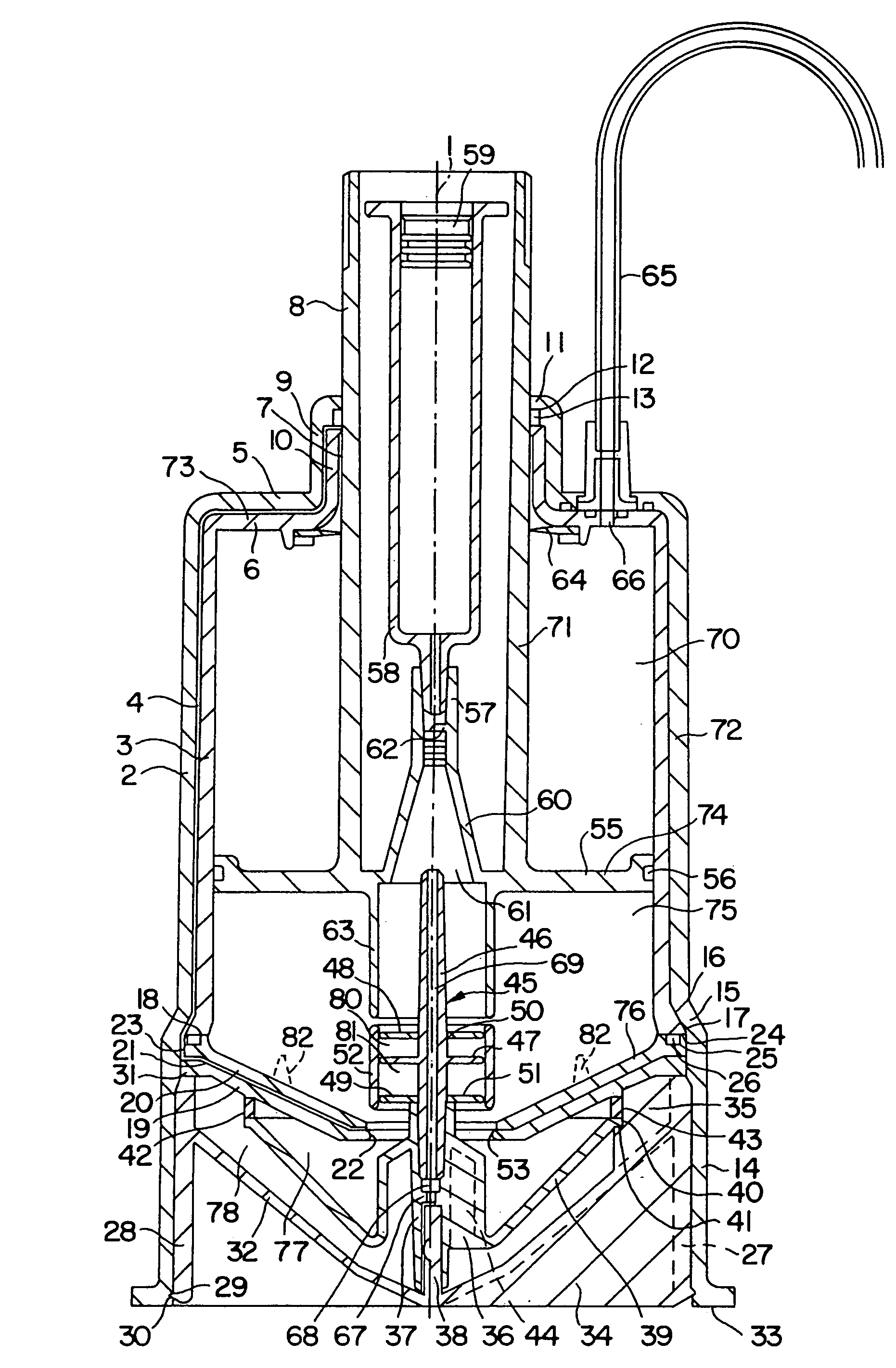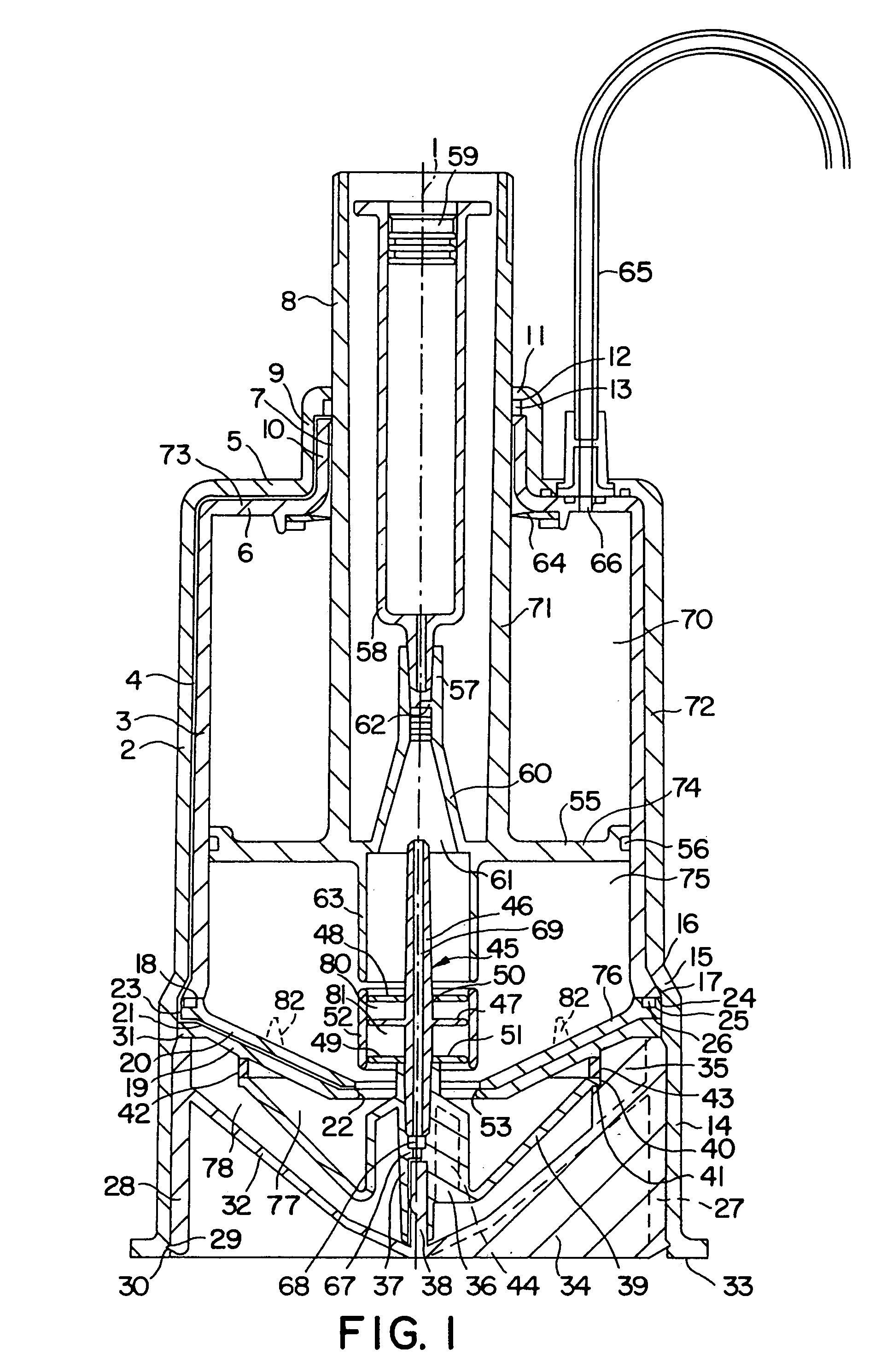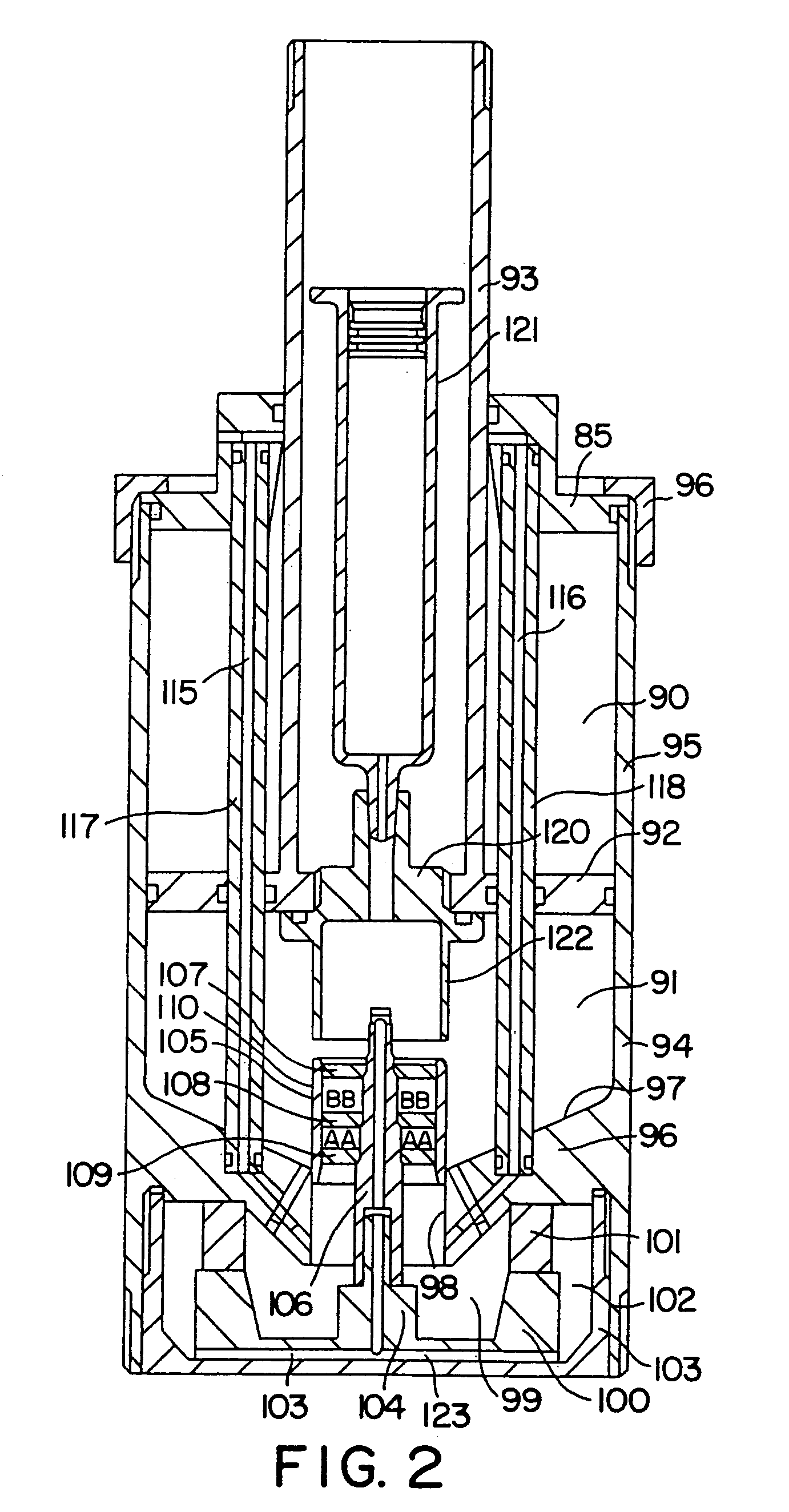Centrifugal filtration method for separating fibrin monomer from blood
- Summary
- Abstract
- Description
- Claims
- Application Information
AI Technical Summary
Benefits of technology
Problems solved by technology
Method used
Image
Examples
example
[0084]140 ml of whole blood and 20 ml of sodium nitrate anticoagulant (USP) was introduced into the first chamber 70 of the device described above. This combination was centrifuged for 2 minutes at about 6,000 RPM to provide a separation of plasma and blood cells. While continuing the centrifugation to main the separation, the piston was raised so as to transfer the innermost phase, i.e. the plasma, into the second chamber 75. Approximately 60 ml of plasma was transferred. This was treated with 30 units of biotenylated batroxobin which was introduced into the second chamber 75 via the upper chamber 80 of the capsule 45 as described previously. The plasma and abroxobin were mixed at a lower speed, e.g. about 2,000 to 3,000 RPM and thereafter centrifuged for 9 minutes at 9,000 RPM.
[0085]The non-crosslinked fibrin polymer gel was precipitated as a thin gel layer onto the cylinder walls and the rotation was ceased. The remaining plasma fluid (serum) was then transferred back into the fi...
PUM
 Login to View More
Login to View More Abstract
Description
Claims
Application Information
 Login to View More
Login to View More - R&D
- Intellectual Property
- Life Sciences
- Materials
- Tech Scout
- Unparalleled Data Quality
- Higher Quality Content
- 60% Fewer Hallucinations
Browse by: Latest US Patents, China's latest patents, Technical Efficacy Thesaurus, Application Domain, Technology Topic, Popular Technical Reports.
© 2025 PatSnap. All rights reserved.Legal|Privacy policy|Modern Slavery Act Transparency Statement|Sitemap|About US| Contact US: help@patsnap.com



